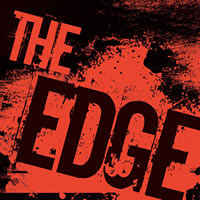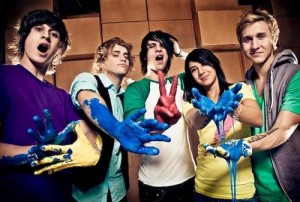Razor & Tie: An NYC Media Company Grows Beyond the Record Label
Greenwich Village, Manhattan: Take a look into the music industry sweet spot, and you may see a company like Razor & Tie Entertainment. Co-founded in 1990 by co-founders Craig Balsam and Cliff Chenfeld, a company that started out as a record label now has mushroomed, growing out with precisely the assets necessary for success in 2010.
Craig Balsam, Co-Founder of Razor & Tie Entertainment
Experience – Check. Two decades going give them the wise eyes of experience, without being too ingrained in their ways.
Multiple Revenue Streams – Check. The core record label remains, with a diverse roster of artists ranging from All That Remains to Bryan McKnight, Dar Williams to Michael McDonald, Semi Precious Weapons and Twisted Sister to kid fave Laurie Berkner, plus soundtracks. But R&T is also a compilation/packaging specialist, music publisher, media buyer, home video company, & kids media company – an organic combo of goods and services.
Street Smarts – Check. Craig Balsam showed SonicScoop how an open mind, sharp eyes, and flexible strategies can point the way to profitability.
Q: How did you first get into the “biz”, as they say?
A: Well, my business partner Cliff Chenfeld and I started the company in 1990 with really no experience in the music business. We were both attorneys who had met at NYU law school, and approached it in a very bright-eyed way. We just thought we could have a music company and a record label — we had no idea how to do that. Luckily, we succeeded. Our company has been around for 20 years, and I’ve learned a tremendous amount in that time.
Q: Why do you think your personality makeup makes you well-suited for your corner of the music industry?
A: As lawyers you learn to pay attention to detail. We both also had creative abilities, were both musicians, and were both writing songs together before starting our business. So having that attention to detail is what helped us to get beyond starting the business and seeing what it could do. We had some ideas for creating revenue, and were able to follow it through and get things done.
Q: Speaking of paying attention to details…Why do you believe attention to detail is important – in the music business, or just in general?
A: Because in creating and building a business, every penny is important, and every aspect of what you do is important, so that you can get things moving forward. It helps you complete whatever ideas you have. Big ideas are great, but they don’t actually succeed unless someone sees them through.
Q: Those are words to live by! Thanks for the wisdom. On the flipside, what’s making your job more challenging these days?
A: I think that the changes in the music industry over the last couple of years have been a real challenge. We’re up for it, and trying to approach it in the same way as we have with issues in the past, in terms of analyzing what’s going on, and adjusting our business to fit the marketplace and adjust to consumer’s desires as they relate to music.
Q: Can you be more specific about some of the challenges that Razor & Tie, and other companies like yours, face?
A: Basically, retail stores have cut their shelf space. At the same time, consumers want to buy music, but want to buy at a lower price then they have traditionally. Those two things squeeze revenue, and as a result you have to adjust your business to operate at a lower revenue rate, or create more revenue. We’re trying to do a little bit of both.
Q: My original idea of Razor & Tie was that it was simply a record label, but as your site clearly states, R&T is a multi-faceted “independent entertainment company”. What guides the evolution of your company? Which divisions are experiencing the most growth, and why?
A: We do a large number of things. Our newest divisions are our music publishing company, which we started two and a half years ago and is doing very, very well. We have a music management business, that is also doing well.
We have a part of our business — we’ve always had it — which is the music compilation business. Recently we’ve seen more success there than we have over the past five years, particularly with TV marketing, which is our expertise.
The latest compilation we’ve had that’s been really successful is The Edge, which is mostly composed of rock tunes from the mid to late 2000’s. It reached #4 record in the country according to Billboard.
I think the strong response to The Edge is based on a couple of things. One is that we’re targeting the demographic very well for this audience – it’s a good value, with 50 songs for around thirty bucks. People realize they can have all of their key songs from a particular period and genre without having to go through iTunes and pick through 50 songs. They can get them for less then they would on iTunes, pluck them off the CD and into their iPod or computer, and off they go.
The concept seems logical and makes a lot of sense, but it hasn’t happened much in the last couple of years. I think it’s part of how consumers are changing, and how they perceive music as value. It’s a value proposition: The song selections are high quality, with no junk on them. People realize, “This is what I want.”
Q: From the label perspective, what type of artists does Razor & Tie work with? In your opinion, what makes a viable artist today, and especially one that’s well suited for your label?
A: One of the reasons I think we’ve been successful is we’ve always signed a broad range of artists. We sign new talent, as well as heritage artists that we believe have an audience that we can connect to.
Dave Barnes, for example, is a great new singer/songwriter on our label. His record came out recently and it’s going to do well — he’s a very talented writer and performer. We also have a metal band called All That Remains, which has also done exceedingly well. We just put out their third record, and they’ve sold 300,000 copies.
And we also have heritage artists that include Neil Sedaka and the Irish Tenors. They have an audience, and their albums sell quite well. So we operate like a major label, in that we have a broad range of artists that we sign.
Q: That sounds like a smart approach. Among your artists, then, what’s a specific project R&T worked on lately that demonstrates the challenges and rewards of building up a band?
A: Let’s talk about a band we have called The Summer Set. They’re a band out of Arizona – kids in their late teens – that are making great, very accessible rock music.

The Summer Set
They’ve been touring extensively, developing an audience by being on a number of tours with other bands. They’ll be on the Warped Tour, we’re looking to take their single to radio, and it all adds up to a band that’s on the verge. That’s exciting, but it’s hard work to get them to the point that they’ll succeed.
Q: Is that a different approach than you would have taken, say, 10 years ago?
A: Artist development is something that labels today don’t do enough of, and indie labels need to do more and more of it. The Summer Set is an example of the need to develop an artist, and help them to grow and develop an audience. So rather than loading up a lot of marketing dollars to have a big street week, you need to spend your money to give your marketing staff support over time, until the audience starts coming to the band.
Q: What do you think artists today need to understand most about how a record label like Razor & Tie operates? What can a label do that an independent artist can’t do themselves?
A: I think that a label can provide a lot of useful guidance and support, both economic and in terms of staffing to artists. But I do think that for artists starting out, it’s really a good idea for them to develop their own sense of who they are creatively and as a live act, and start to develop their own audience, before they start looking to be on a label.
I think that way they learn about how to be successful, and how to get there on their own. And I think that the challenges artist have with labels very early in their relationships can be avoided by waiting a little and letting artists develop on their own first.
Q: I notice that in your company’s exec “about” page it says in Cliff’s profile he founded R&T with his “partner and friend” Craig. Is that combination of partner/friend important? How do you maintain a long-term friendship with someone that you’re also in business with?
A: That’s a great question. In a lot of ways, it’s just luck that Cliff and I have always managed to get along personally and have a great friendship, and also survive the many turmoils and successes of having a business together. Sometimes that works out for people, and sometime it doesn’t. Cliff and I have been fortunate that we’ve always been able to remain friends. There’s no real secret to it, it’s just fortunate.
It’s really interesting. Part of it is just not letting anything get to you for too long, and not holding grudges. That’s a personality thing that some people can do and some people can’t.
Q: How do you think the music business is changing as we speak?
A: I think that the music business is struggling to figure out how consumers want to interact with recorded music, and how — and how much — they want to pay for that. That’s the biggest challenge we have right now, and until we figure that out, we’re going to be in a holding pattern.
Ultimately, I think that consumers will figure out that full-time access to music is equivalent to ownership, and will pay “X” amount per month to have that access. Ultimately, that’s how we’re going to succeed.
Q: It will be interesting to see how the subscription model finally does play out. Since this is SonicScoop we often ask: What makes R&T an only-in-NYC story?
A: I really only see advantages to being based in NYC. There’s a big music industry here. It makes it easy to communicate and meet people that you do business with, and it also helps because every kind of music you want to see comes through NYC.
Every genre, and every artist who has a tour ends up here, so you can basically see live so much more than if you were in a different market. Ultimately, NYC is the greatest city in the world of music , and in my view the best place to establish a music business. – David Weiss







